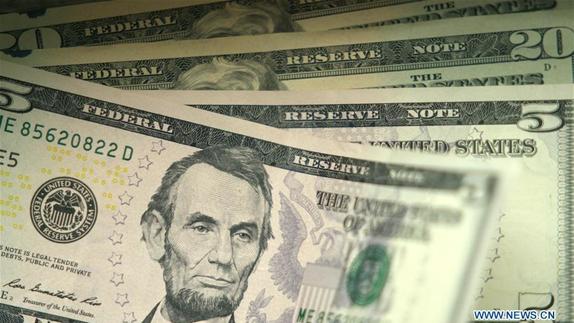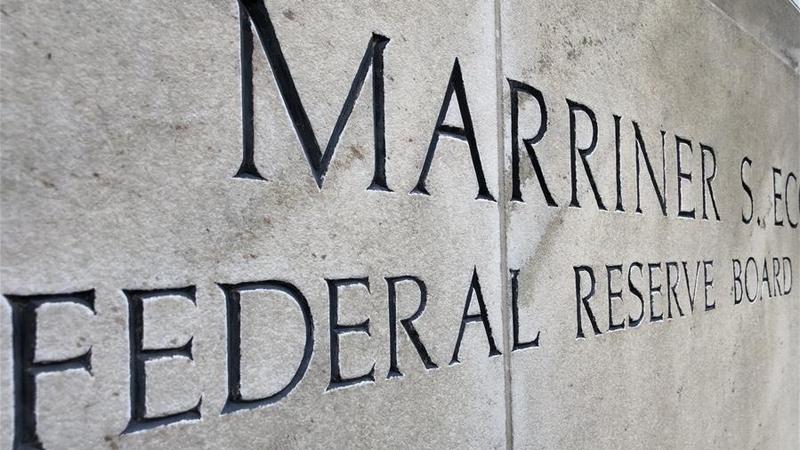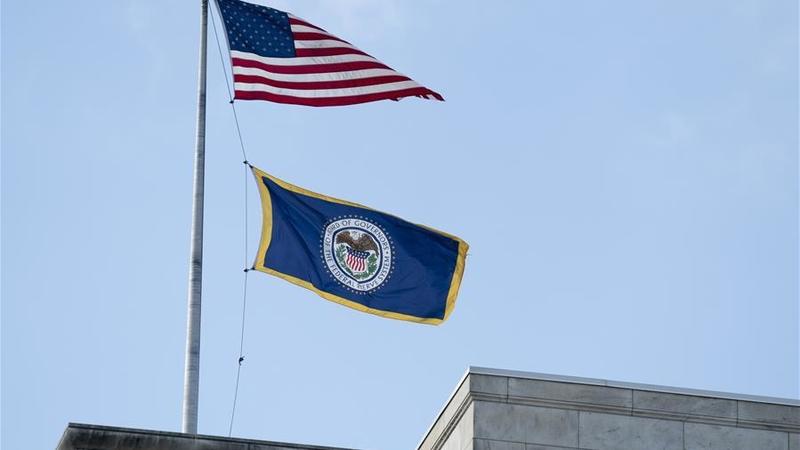 Photo taken on March 3, 2020 shows US dollar banknotes in Washington DC, the United States. The U.S. Federal Reserve lowered the target range for the federal funds rate by 50 basis points to a range of 1.00 percent to 1.25 percent, as the novel coronavirus disease poses "evolving risks" to economic activity, the central bank announced Tuesday. (LIU JIE / XINHUA)
Photo taken on March 3, 2020 shows US dollar banknotes in Washington DC, the United States. The U.S. Federal Reserve lowered the target range for the federal funds rate by 50 basis points to a range of 1.00 percent to 1.25 percent, as the novel coronavirus disease poses "evolving risks" to economic activity, the central bank announced Tuesday. (LIU JIE / XINHUA)
WASHINGTON - The US Federal Reserve (Fed), in a surprise move, lowered the target range for the federal funds rate by 50 basis points on Tuesday, as the COVID-19 outbreak poses "evolving risks" to economic activity.
RARE MOVE
"In light of these risks and in support of achieving its maximum employment and price stability goals," the Federal Open Market Committee (FOMC), the Fed's policy-setting body, announced in a statement that it decided to cut the benchmark interest rate by 0.5 percentage point, putting it in a range of 1-1.25 percent.
Shortly after, Fed Chairman Jerome Powell said in a press conference that since the January FOMC meeting, the spread of the coronavirus has brought new challenges and risks. "The magnitude and persistence of the overall effects on the economy, however, remain highly uncertain, and the situation remains a fluid one."
"Against this background, the Committee judged that the risks to the US outlook have changed materially," said the US Fed chief. "In response, we have eased the stance of monetary policy to provide some more support to the economy."
Krista Schwarz, an assistant professor of finance at the Wharton School of the University of Pennsylvania, told Xinhua that the Fed's half-point rate cut is "substantial," in that it is the largest magnitude of policy target rate cut since the fall of 2008, and it is the first inter-meeting cut since the financial crisis.
The emergency rate cut, however, did not seem to have calmed investors. Stocks fell sharply in volatile trading, with the Dow Jones Industrial Average closing 785.91 points lower, or 2.94 percent, after a short-lived surge earlier in the session. The yield on 10-year US Treasuries dropped below 1 percent for the first time.
NOT A CURE
US President Donald Trump, who has repeatedly criticized the central bank, voiced his discontent on Twitter. "The Federal Reserve is cutting but must further ease and, most importantly, come into line with other countries/competitors," Trump said. "More easing and cutting!"
 Photo taken on March 3, 2020 shows the US Federal Reserve building in Washington DC, the United States. (LIU JIE / XINHUA)
Photo taken on March 3, 2020 shows the US Federal Reserve building in Washington DC, the United States. (LIU JIE / XINHUA)
The Federal Reserve is cutting but must further ease and, most importantly, come into line with other countries/competitors. More easing and cutting!
Donald Trump, President, the US
Lawrence Summers, former US treasury secretary and economic advisor to former President Barack Obama, also lashed out at the decision, though for a different reason.
"When you have limited ammunition you have to conserve it. The Fed has limited ammunition with interest rates so low," tweeted Summers, also a professor and former president of Harvard University.
"Interest rates don't cure the #coronavirus and interest rates don't repair supply chains," said Summers.
Calling it a "pre-emptive" action, Schwarz told Xinhua the Fed took the emergency step "against the backdrop of the virus' potential effect on US growth as firms cut earnings forecasts and draw down inventories due to disruptions in supply chains."
Schwarz with Wharton added that the central bank's rate cut clearly does not affect the adverse supply shock, but it might mitigate the virus-related drop in demand.
Former Fed economist Julia Coronado said on Twitter that the Fed "can't save the day" here with rate cuts. "Lack of information is not helping firms and households form expectations and make plans," she said.
"We are going to need a competent and coordinated response from public health and fiscal policy," Coronado said.
MORE COORDINATION
Noting that the outbreak will require a "multi-faceted" response, the Fed chairman told reporters that the central bank does not have all the answers, urging healthcare professionals and fiscal authorities to take measures they deem appropriate.
 Photo taken on March 3, 2020 shows flags on the US Federal Reserve building in Washington D.C., the United States. (LIU JIE / XINHUA)
Photo taken on March 3, 2020 shows flags on the US Federal Reserve building in Washington D.C., the United States. (LIU JIE / XINHUA)
"But we do believe that our action will provide a meaningful boost to the economy," said Powell. "More specifically, it will support accommodated financial conditions and avoid a tightening of financial conditions which can weigh on activity and will help boost household and business confidence."
At a hearing before the House Ways and Means Committee on Tuesday, US Treasury Secretary Steven Mnuchin said that infrastructure spending would be a "priority" for the Trump administration if there is any need to stimulate the US economy as a result of the COVID-19 outbreak.
Mnuchin told lawmakers that the administration stands ready to work closely with Congress on the emergency funding package to deal with the spreading coronavirus. Meanwhile, the administration is considering more tax cuts, but there is no firm plan yet.
Earlier in the day, finance ministers and central bank governors of the Group of Seven (G7) industrialized nations said in a joint statement issued after an emergency conference call that they will "use all appropriate policy tools" in the efforts to mitigate the economic impact from the ongoing COVID-19 outbreak.
READ MORE: Hong Kong cuts base rate following Fed’s emergency move
"That is a statement of general support," said Powell. "And I think it's up to individual countries, individual fiscal policies and individual central banks to do what they are going to do."
The US Fed chair added that it is possible there will be some "more formal coordination" as a move forward.
Schwarz noted that continental Europe and Japan are more constrained in cutting policy rates due to their present negative rate stance, and so the US rate cut is "helpful more broadly."


